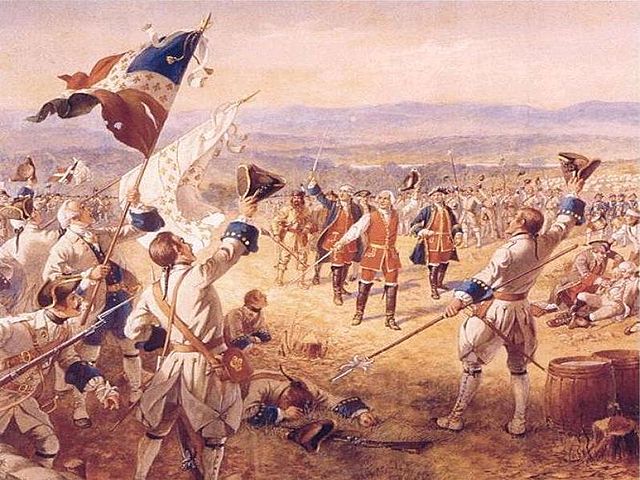Military history of the United States
The military history of the United States spans over two centuries, the entire history of the United States. During those centuries, the United States evolved from a newly formed nation which fought for its independence from the Kingdom of Great Britain (1775–1783) to world superpower status in the aftermath of World War II to the present. As of 2021, the United States Armed Forces consists of the Army, Marine Corps, Navy, Air Force and Space Force, all under the command of the Department of Defense, and the Coast Guard, which is controlled by the Department of Homeland Security.
In 1763, the indigenous tribes of Pontiac's Confederacy lay siege to Fort Detroit, a British fort on the American frontier.
The Siege of Yorktown was the decisive battle of the American Revolutionary War. The battle was the last major land engagement in the war, with the British Army's defeat at Yorktown prompting the British to negotiate an end to the conflict.
Washington's surprise crossing of the Delaware River in December 1776 was a major comeback after the loss of New York City; his army defeated the British in two battles and recaptured New Jersey.
The Battle of Fallen Timbers was a decisive battle in the Northwest Indian War, where American forces defeated the tribes of the Western Confederacy.
The French and Indian Wars were a series of conflicts that occurred in North America between 1688 and 1763, some of which indirectly were related to the European dynastic wars. The title French and Indian War in the singular is used in the United States specifically for the warfare of 1754–63, which composed the North American theatre of the Seven Years' War and the aftermath of which led to the American Revolution. The French and Indian Wars were preceded by the Beaver Wars.
Fort Carillon controlled the portage between Lake George and Lake Champlain.
At Carillon the French won a rare victory in a battle fought according to European tactical doctrines.






